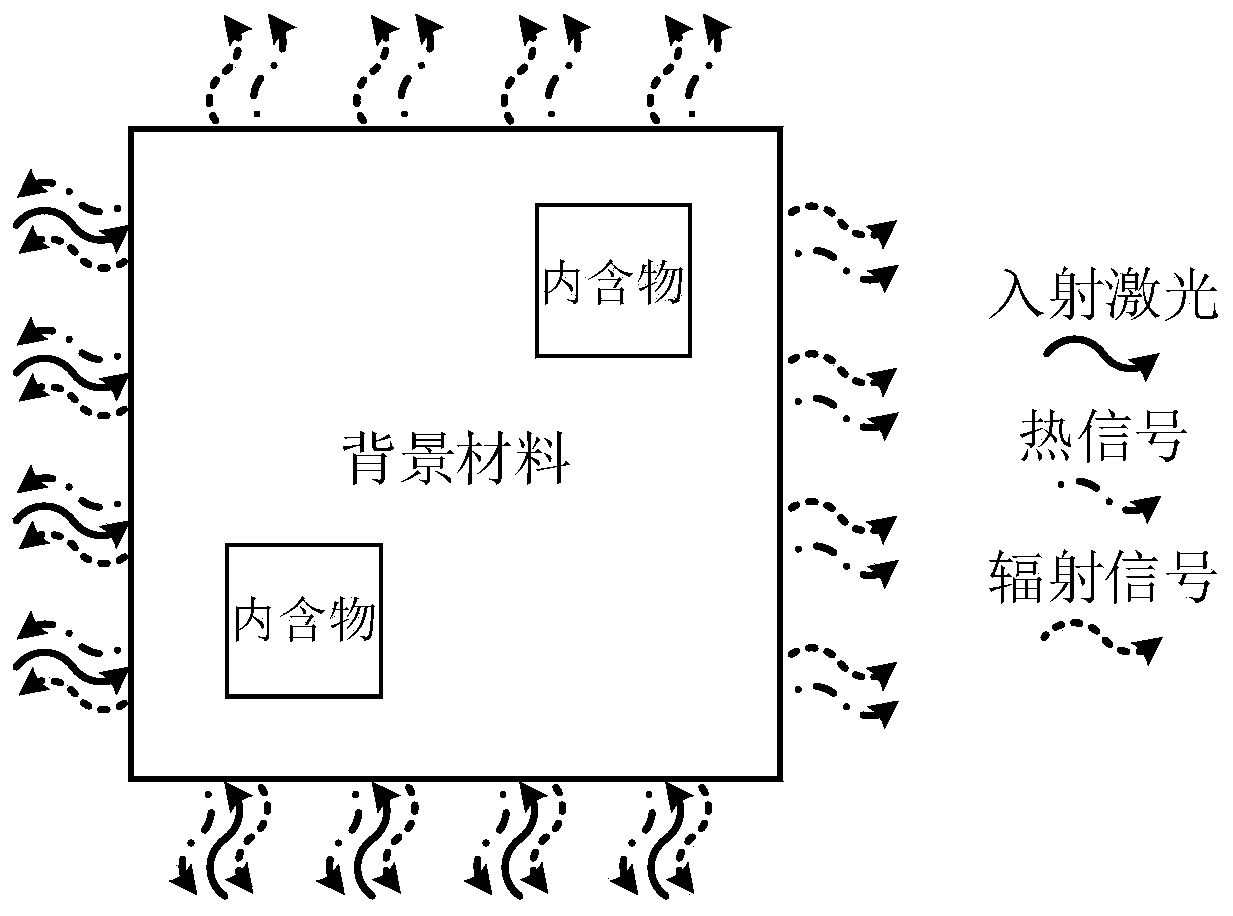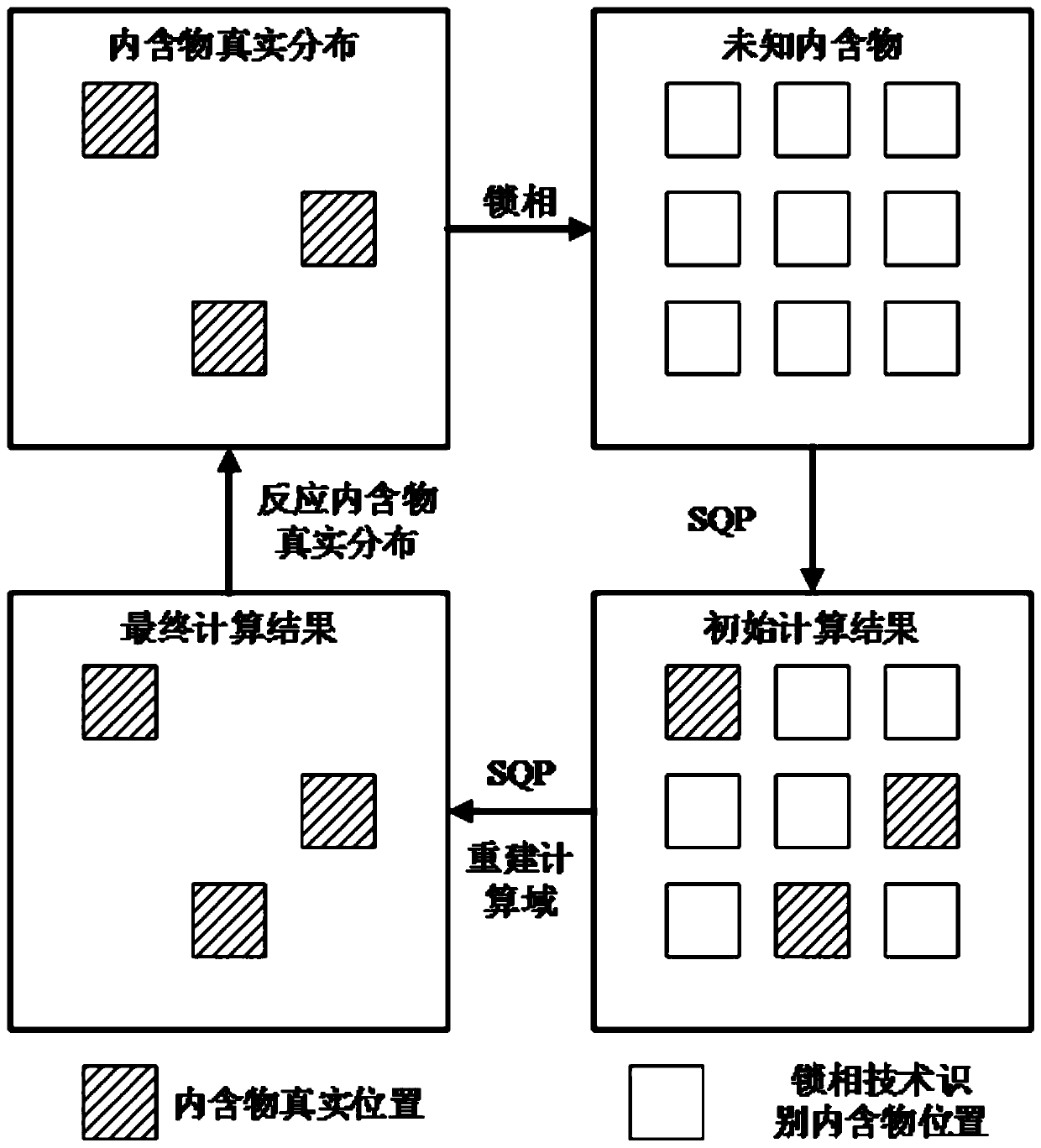A method for measuring the distribution of photothermal properties of translucent materials based on the combination of phase-locked thermal waves and optical tomography
A translucent material and optical tomography technology, which is applied in color/spectral characteristic measurement, material thermal analysis, scattering characteristic measurement, etc., can solve problems such as the inability to accurately measure the distribution of photothermal characteristics of translucent materials
- Summary
- Abstract
- Description
- Claims
- Application Information
AI Technical Summary
Problems solved by technology
Method used
Image
Examples
specific Embodiment approach 1
[0082] A method for measuring the distribution of photothermal properties of translucent materials based on the combination of phase-locked thermal waves and optical tomography, comprising the following steps:
[0083] Step 1: Material reconstruction physical model such as figure 1 As shown, use LIT technology to identify the position of inclusions in the material; LIT technology is lock-in thermal imaging technology;
[0084] Step 2: Assign the optical and thermal properties of the background material to the inclusions as the initial values of the optical and thermal properties of the inclusions; the optical properties include absorption coefficient and scattering coefficient, and the thermal properties are thermal conductivity;
[0085] Step 3: Invert the absorption coefficient, scattering coefficient and thermal conductivity of the inclusions initially determined in step 1 through the SQP algorithm; the SQP algorithm is a sequential quadratic programming algorithm;
[00...
specific Embodiment approach 2
[0094] The specific process of using LIT technology to identify the position of inclusions in the material in the method for measuring the distribution of photothermal properties of translucent materials based on the combination of phase-locked thermal wave and optical tomography described in this embodiment is as follows:
[0095] Irradiating the material with a sine wave radiation source can obtain a sine wave thermal signal on the surface of the material. The thermal response is determined by the physical properties of the material. The thermal and optical properties of the material are determined according to the measurement signal. The infrared sine wave laser heat flow is expressed by the following formula:
[0096] q laser =q am sin(2πf e t) (1)
[0097] In the formula, q am and f e represent the peak heat flux and frequency of the incident laser, respectively, and t represents the time;
[0098] The discrete correlation algorithm is used to extract the amplitude a...
specific Embodiment approach 3
[0113] The SQP algorithm calculation process required for the process of determining the absorption coefficient, scattering coefficient and thermal conductivity of the inclusions in step 3 described in this embodiment is as follows:
[0114] Consider a nonlinear programming problem of the form:
[0115] min F(x)
[0116] Constraint c i (x)=0i∈E={1,2,...,m e} (20)
[0117] c i (x)≥0i∈I'={m e +1,me +2,...,m}
[0118] In the formula, F(x) is the objective function to be optimized, specifically the objective function F corresponding to the reconstruction of the absorption coefficient and scattering coefficient 1 Or reconstruct the corresponding objective function F of the thermal conductivity 2 ; x represents the parameter to be reconstructed (reconstructed parameter, representing absorption absorption coefficient, scattering coefficient or thermal conductivity); c i Indicates constraints, m, m e Represent the number of total constraints and equality constraints; E repres...
PUM
 Login to View More
Login to View More Abstract
Description
Claims
Application Information
 Login to View More
Login to View More - R&D
- Intellectual Property
- Life Sciences
- Materials
- Tech Scout
- Unparalleled Data Quality
- Higher Quality Content
- 60% Fewer Hallucinations
Browse by: Latest US Patents, China's latest patents, Technical Efficacy Thesaurus, Application Domain, Technology Topic, Popular Technical Reports.
© 2025 PatSnap. All rights reserved.Legal|Privacy policy|Modern Slavery Act Transparency Statement|Sitemap|About US| Contact US: help@patsnap.com



